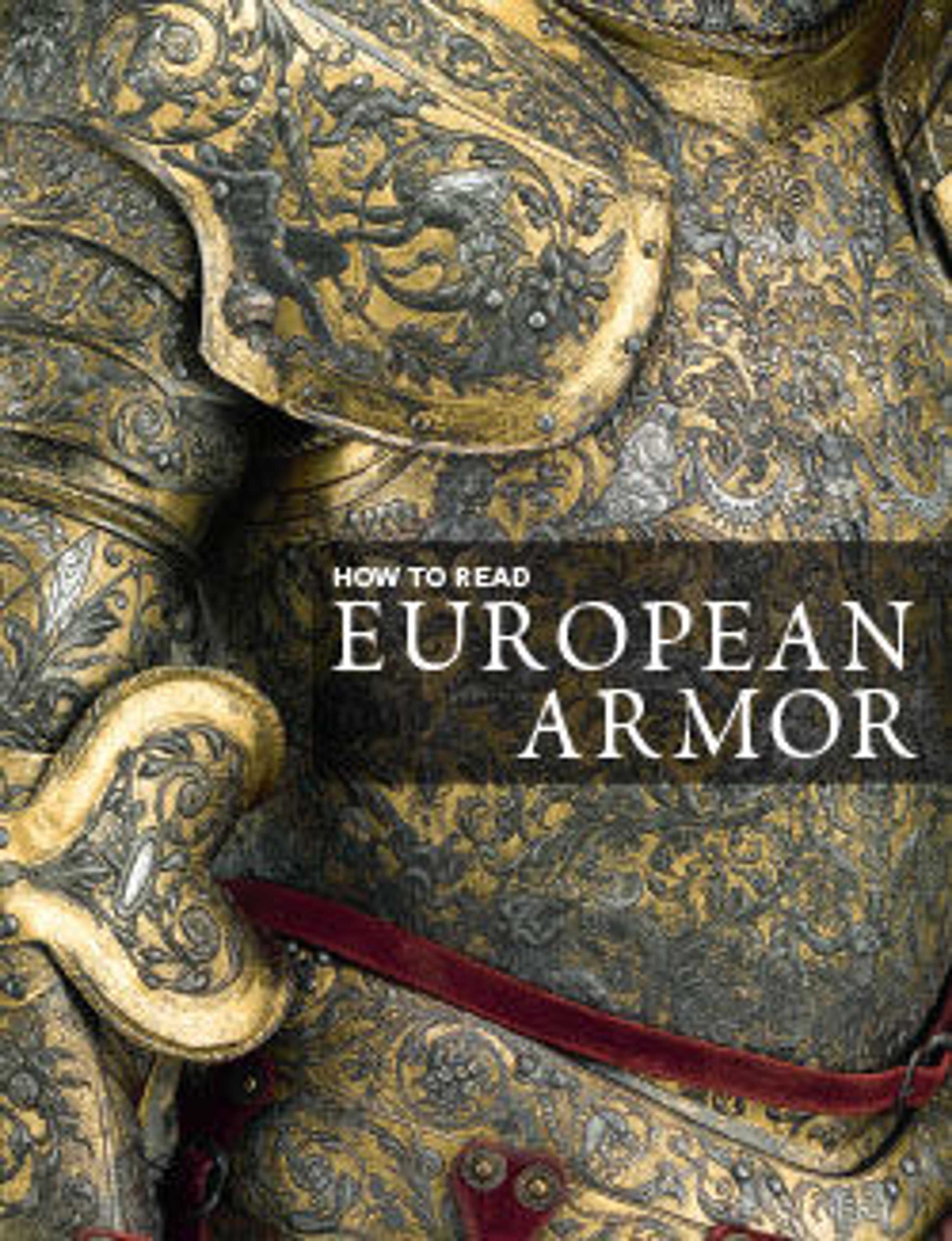Cuirassier Armor
The construction and build of this armor are typical of a cuirassier’s harness, a type developed toward the end of the sixteenth century in response to the growing use and efficiency of firearms. The advent of firearms caused armorers to increase the thickness and weight of plates and to supplement them with separate reinforcing plates. Before an armor of this type was finished, it was fired at with a pistol or musket to test its effectiveness against bullets, and the bullet dents were left as a guarantee of the strength and quality of its steel. This particular armor retains two reinforces with such dents, a rarely encountered plate for the back of the helmet bowl, and a plackard for the breastplate; it formerly possessed a third plate for the front of the visor. Weighing more than eighty-six pounds, it is one of the heaviest field armors known.
Although generally conforming to the construction of cuirassier harnesses worn throughout Europe about 1600 to 1640, this example is more characteristic of northern Italian (Milan or Brescia) workmanship. The armor’s weight, its reinforcing plates, and the deep “proof marks” provide a vivid reminder of the constant struggle to adapt armor to changes in tactics and weaponry as well as fashion.
Although generally conforming to the construction of cuirassier harnesses worn throughout Europe about 1600 to 1640, this example is more characteristic of northern Italian (Milan or Brescia) workmanship. The armor’s weight, its reinforcing plates, and the deep “proof marks” provide a vivid reminder of the constant struggle to adapt armor to changes in tactics and weaponry as well as fashion.
Artwork Details
- Title: Cuirassier Armor
- Date: ca. 1610–30
- Geography: Milan; Brescia, Lombardy
- Culture: Italian, Milan or Brescia
- Medium: Steel, gold, leather, textile
- Dimensions: H. as mounted 54 in. (137.2 cm); Wt. 86 lb. 8 oz. (39.24 kg)
- Classification: Armor for Man
- Credit Line: Purchase, Arthur Ochs Sulzberger Gift, 2002
- Object Number: 2002.130a–p
- Curatorial Department: Arms and Armor
More Artwork
Research Resources
The Met provides unparalleled resources for research and welcomes an international community of students and scholars. The Met's Open Access API is where creators and researchers can connect to the The Met collection. Open Access data and public domain images are available for unrestricted commercial and noncommercial use without permission or fee.
To request images under copyright and other restrictions, please use this Image Request form.
Feedback
We continue to research and examine historical and cultural context for objects in The Met collection. If you have comments or questions about this object record, please complete and submit this form. The Museum looks forward to receiving your comments.
